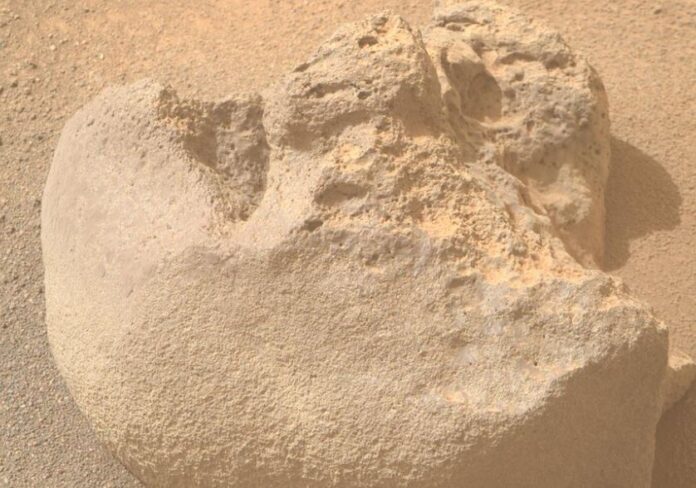NASA’s Perseverance rover has spotlighted a new “Image of the Week” for Week 188 (September 15-21, 2024), selected by public vote. Captured by the rover’s Right Mastcam-Z camera on September 19, 2024 (Sol 1274) at 12:32 p.m. local Mars time, the image showcases the striking Martian landscape.
The Mastcam-Z system, positioned high on Perseverance’s mast, consists of two zoomable cameras that provide detailed images of Mars’ surface. This latest image offers a glimpse of the Jezero Crater, where Perseverance continues its mission to search for signs of ancient life and gather samples for future analysis.
The public plays a key role in the mission’s outreach efforts, with weekly voting to select standout images taken by the rover during its ongoing exploration of the Red Planet.
NASA’s Perseverance Rover: Key Features and Innovations
NASA’s Perseverance rover, which landed on Mars in February 2021, is a marvel of engineering and a significant advancement in planetary exploration. Designed to explore the Jezero Crater, the rover’s primary mission is to search for signs of ancient microbial life, collect samples, and pave the way for future human missions to Mars. Here are some of its key features and innovations:
1. Advanced Scientific Instruments
Perseverance is equipped with a suite of sophisticated scientific instruments, enabling it to conduct various experiments and analyses:
- SuperCam: This instrument can analyze rocks and soil from a distance, using laser-induced breakdown spectroscopy (LIBS) to determine the composition of materials on the Martian surface.
- Mars Environmental Dynamics Analyzer (MEDA): This suite of sensors monitors the weather and environmental conditions on Mars, providing valuable data on dust, temperature, humidity, and wind.
- Rover’s Chemistry and Mineralogy (CHEMIN): This X-ray diffraction instrument identifies and characterizes the minerals present in Martian rocks and soils.
2. Sample Collection and Cache System
Perseverance is the first rover designed to collect and cache samples for future return to Earth. It carries a sophisticated drill and a system to store core samples in sealed tubes, which can be retrieved by a future mission. This groundbreaking approach will allow scientists to conduct in-depth analyses of Martian materials on Earth, enhancing our understanding of the planet’s history and potential for past life.
3. Ingenuity Helicopter
One of the standout features of the Perseverance mission is the Ingenuity helicopter, which made history as the first powered flight on another planet. Ingenuity has demonstrated the feasibility of aerial exploration in the Martian atmosphere, providing valuable data on terrain and enabling new perspectives for Perseverance’s ground operations.
4. Enhanced Mobility and Autonomy
Perseverance is equipped with advanced mobility systems that allow it to traverse challenging terrains, including sand dunes, rocks, and steep slopes. Its autonomous navigation capabilities enable it to make real-time decisions about its path and avoid obstacles, increasing its efficiency during exploration.
5. Mastcam-Z Imaging System
The rover features the Mastcam-Z imaging system, a pair of high-resolution cameras that can capture both color and 3D images of the Martian landscape. The cameras can zoom in on distant features, providing detailed observations that contribute to geological studies. This system also allows for panoramic views, enhancing the visual documentation of the rover’s journey.
6. Power and Communication Systems
Perseverance is powered by a Multi-Mission Radioisotope Thermoelectric Generator (MMRTG), which provides a constant power source, allowing it to operate day and night and through the harsh Martian winter. The rover’s communication systems enable it to relay data back to Earth, providing updates on its findings and activities.



